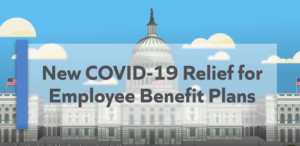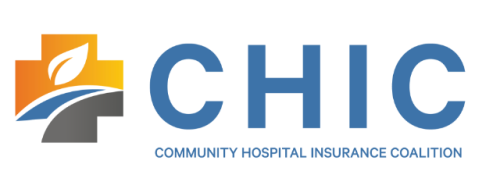Carrier Premium Credits and ERISA Fiduciary Obligations
IRS Releases 2021 HSA Contribution Limits and HDHP Deductible and Out-of-Pocket Limits
Updated Model COBRA Notices Available
COVID-19 Relief for Employee Benefit Plan Deadlines
Coalition Provides Much Needed Cash to Rural Hospitals
Carrier Premium Credits and ERISA Fiduciary Obligations
Due to COVID-19 and state and local stay-at-home orders, utilization of group medical and dental insurance benefits is down. As a result, some carriers recently notified employers that they will be issued premium credits. When asking how these premium credits should be treated by the employer, we often compare them to the ACA’s medical loss ratio (MLR) rebates. While these premium credits are not MLR rebates, a similar decision must be made to determine whether they, like MLR rebates, are ERISA plan assets.
Background
As background, the Affordable Care Act’s MLR rule requires health insurers to spend a certain percentage of premium dollars on claims or activities that improve health care quality, otherwise they must provide a rebate to employers. At the same time the U.S. Department of Health and Human Services issued the MLR rule, the U.S. Department of Labor (DOL) issued Technical Release 2011-04 (TR 2011-04), which clarifies how rebates should be treated under ERISA. Under ERISA, anyone who has control over plan assets, such as the plan sponsor, has fiduciary obligations and must act accordingly.
Clearly, the premium credits we are seeing are not subject to the MLR rule; however, a similar analysis applies. TR 2011-04 clarified that insurers must provide any MLR rebates to the policyholder of an ERISA plan. However, while the DOL’s analysis was focused on MLR rebates, it recognized that distributions from carriers can take a variety of forms, such as “refunds, dividends, excess surplus distributions, and premium rebates.” Regardless of the form or how the carrier describes them, to the extent that a carrier credit, rebate, dividend, or distribution is provided to a plan governed by ERISA, then the employer must always consider whether it is a “plan asset” subject to Title I of ERISA. If it is, then as the party with authority and control over the “plan assets,” the employer is a fiduciary subject to Section 404 of ERISA and bound by the prohibited transactions provisions of Section 406. In other words, to the extent that a refund is a plan asset, it must be used for the exclusive benefit of plan participants, which may include using it to enhance plan benefits or returning it to employees in the form of a premium reduction or cash refund.
Treatment of Premium Credits to Employers
In situations where an employer uses a trust to hold the insurance policies, the DOL’s position is that the rebates are generally assets of the plan. However, in situations where the employer is the policyholder, the employer may, under certain circumstances, retain some or all of a rebate, credit, refund, or dividend. When considering whether a rebate is a plan asset, the terms of the plan should be reviewed. As discussed below, some employers draft their plan documents in a manner that allows them to retain these types of refunds. If the terms of the plan are ambiguous, the DOL recommends employers use “ordinary notions of property rights” as a guide.
When determining whether carrier credits, dividends, distributions or rebates are ERISA plan assets, the DOL will look to the terms of the documents governing the plan, including the insurance policy. If these governing documents are silent on the issue or unclear, then the DOL will take into consideration the source of funding for the insurance premium payments. In such situations, the amount of a premium credit that is not a plan asset (and that the employer may therefore retain) is generally proportional to the amount that the employer contributed to the cost of insurance coverage. For example, if an employer and its employees each pay a fixed percentage of the cost, a percentage of the premium credit equal to the percentage of participants’ cost would be attributable to participant contributions. In the event that there are multiple benefit options, a premium credit attributable to one benefit option cannot be used to benefit enrollees in another benefit option.
The Plan Document
Employers can draft their plans to make it clear that the employer retains all rebates, credits, distributions, etc. if the rebates, credits, distributions, etc. do not exceed the employer’s contribution towards the benefit. If given this flexibility in the plan, the employer may not have to return a portion of the premium credit to employees or use the credit to provide a premium reduction. While this gives employers more flexibility, employers should consider that carriers communicate some premium refunds, such as an MLR rebates, to both the policyholder and participants, therefore employees know the employer received money back from the carrier and they may expect something in return. Therefore, there is the potential for employee relations issues with this approach.
If the plan document does not provide this flexibility to the employer, is silent with regard to the use of such funds, or is unclear about how such funds are allocated, then the employer should treat any premium credits like they are ERISA plan assets (to the extent they’re attributable to employee contributions) and allocate them accordingly.
Allocating the Employees’ Share of a Premium Credit
The portion of the premium credit that is considered a plan asset must be handled according to ERISA’s general standards of fiduciary conduct. However, as long as the employer adheres to these standards, it has some discretion when allocating the premium credit.
If an ERISA plan is 100 percent employee paid, then the premium credit must be used for the benefit of employees. If the cost of the benefit is shared between the employer and participants, then the premium credit can be shared between the employer and plan participants.
There is some flexibility here. For example, if the employer finds that the cost of distributing shares of a premium credit to former participants approximates the amount of the proceeds, the employer may decide to distribute the portion of a premium credit attributable to employee contributions to current participants using a “reasonable, fair, and objective” method of allocation. Similarly, if distributing cash payments to participants is not cost-effective (for example, the payments would be the minimum amounts, or would have tax consequences for participants) the employer may apply the premium credit toward future premium payments or benefit enhancements. An employer may also vary the premium credit so that employees who paid a larger share of the premium will receive a larger share of the premium credit.
Ultimately, many employers provide the employees’ share of the premium credit in the form of a premium reduction or discount to all employees participating in the plan at the time the premium credit is distributed. Employers should review all relevant facts and circumstances when determining how such a credit will be distributed.
Regardless, to avoid ERISA’s trust requirement, the portion of a premium credit that is plan assets must be used within three months of receipt by the policyholder.
Conclusion
Employers that would like additional flexibility in how to treat carrier premium credits should work with counsel to update their plan documents. Even for plans with flexibility built into the terms, we encourage consultation with counsel to review the facts and circumstances surrounding any such premium credits to ensure compliance with ERISA.
IRS Releases 2021 HSA Contribution Limits and HDHP Deductible and Out-of-Pocket Limits
In Rev. Proc. 2020-32, the IRS released the inflation adjusted amounts for 2020 relevant to HSAs and high deductible health plans (HDHPs). The table below summarizes those adjustments and other applicable limits.
[table id=21 /]
Out-of-Pocket Limits Applicable to Non-Grandfathered Plans
The ACA’s out-of-pocket limits for in-network essential health benefits have also been announced and have increased for 2021.
[table id=22 /]
Note that all non-grandfathered group health plans must contain an embedded individual out-of-pocket limit within family coverage, if the family out-of-pocket limit is above $8,550 (2021 plan years) or $8,150 (2020 plan years). Exceptions to the ACA’s out-of-pocket limit rule are available for certain small group plans eligible for transition relief (referred to as “Grandmothered” plans). A one-year extension of transition relief was announced on January 31, extending the transition relief to policy years beginning on or before October 1, 2021, provided that all policies end by December 31, 2022. (This transition relief has been extended each year since the initial announcement on November 14, 2013.)
Next Steps for Employers
As employers prepare for the 2021 plan year, they should keep in mind the following rules and ensure that any plan materials and participant communications reflect the new limits:
- HDHPs cannot have an embedded family deductible that is lower than the minimum HDHP family deductible of $2,800.
- The out-of-pocket maximum for family coverage for an HDHP cannot be higher than $14,000.
- All non-grandfathered plans (whether HDHP or non-HDHP) must cap out-of-pocket spending at $8,550 for any covered person. A family plan with an out-of-pocket maximum in excess of $8,550 can satisfy this rule by embedding an individual out-of-pocket maximum in the plan that is no higher than $8,550. This means that for the 2021 plan year, an HDHP subject to the ACA out-of-pocket limit rules may have a $7,000 (self-only)/$14,000 (family) out-of-pocket limit (and be HSA-compliant) so long as there is an embedded individual out-of-pocket limit in the family tier no greater than $8,550 (so that it is also ACA-compliant).
Updated Model COBRA Notices Available
The Department of Labor (DOL) recently issued new model notices for group health plan administrators to use to comply with COBRA notification requirements.
Although plan administrators are not required to use the updated model notices, the DOL generally considers their use—with the addition of appropriate plan information—to be good faith compliance with COBRA’s content requirements for:
- The general notice of coverage continuation rights, which must be provided to each employee and spouse within 90 days of coverage.
- The notice of a qualified beneficiary’s right to elect continued coverage, which must be provided within 14 days after receiving notice of a qualifying event.
The updated model notices aim to help qualified beneficiaries better understand the interactions between Medicare and COBRA. Additional details about Medicare and COBRA enrollment options are also included in the updated model notices.
COVID-19 Relief for Employee Benefit Plan Deadlines
The DOL and the Department of Treasury (Treasury) recently issued deadline relief to help employee benefit plans and plan participants affected by the COVID-19 outbreak.
Participant Notices
The final rule extends the time frames for health plan participants to:
- Request special enrollment under HIPAA
- Elect COBRA continuation coverage, pay COBRA premiums and notify the plan of a COBRA qualifying event
- File benefit claims and appeals, and request external review of denied claims
These deadlines are extended by disregarding the “Outbreak Period.” The Outbreak Period is the period of time from March 1, 2020, until 60 days after the announced end of the National Emergency (or such other date announced by the DOL and Treasury). The Outbreak Period cannot exceed one year.
ERISA Notices and Disclosures
In addition to the deadline relief for plan participants, the DOL issued Disaster Relief Notice 2020-01 to extend the time for plan officials to furnish benefit statements and other notices and disclosures required under ERISA.
Some of the key disclosures required by ERISA include the Summary Plan Description (SPD), Summary of Material Modifications (SMM) and Summary of Benefits and Coverage (SBC).
This relief is available to plans that act in good faith to furnish required documents as soon as administratively practicable. Acting in good faith can include using electronic communication to provide documents if certain requirements are met.
More Information
There are additional deadlines affected by the COVID-19 relief. Contact us today to learn which other benefit plan deadlines are extended.


